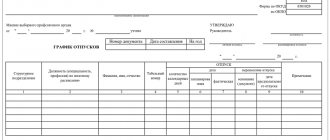What is ODN for electricity?
The easiest way to explain the meaning of this term is with an example. Let's say there is a standard apartment building connected to the power supply. The total expense in this case will include the following components:
- Electricity consumed by individual consumers.
- Electricity necessary to power the equipment of common home areas (lighting of stairwells, elevator equipment, technological losses on internal lines, etc.). This item of expenditure is called “general household needs” or abbreviated as GDN.
Consumption for the first item is determined according to the readings of individual meters. For the second, a special calculation is made, the results of which are reflected in the corresponding column of the utility payment receipt.
Receipt with column ONE electricity
How to understand housing and communal services rent receipts and reduce the cost: explanation
In some cases, you can reduce the amount payable. This is possible if:
- services are provided with poor quality;
- metering devices are not maintained as specified in the contract;
- the price is illegally inflated;
- the amount for which payment must be made exceeds 20% of the family’s total earnings.
Only in these situations can you count on the management company to meet you halfway and reduce the payment. The homeowner must make a written request. Help is of a declarative nature.
We studied how to understand and correctly read a bill for utility services, housing and communal services, analyzed the breakdown of payments, took into account all the nuances and unusual abbreviations. The most important thing is to ensure that the data is correct. It is important to check all fields, enter the values of consumed resources correctly and calculate the amount to be paid. Then there will be no difficulties with monthly payments.
What is included in the ODN?
Residents of apartment buildings, having received a receipt that includes payment for one-time expenses, often wonder what this category of expenses includes. Let us answer this question by providing a drawing for clarity, listing common household appliances.
Equipment included in the ODN
Designations:
- a) Lighting fixtures in staircases, attics and basements.
- b) Lighting systems for local areas.
- c) Elevator equipment.
- d) Security systems (intercoms, video surveillance, etc.).
- e) Fire alarm.
- f) Providers' equipment.
- g) Antenna amplifiers.
- h) Pumping equipment.
- j) Electricity losses.
Please note that the last point includes both losses of the intra-house network and unauthorized connections that bypass individual devices that take into account electricity consumption. That is, in this case we can talk about stealing electricity from neighbors in the house.
Payment for one day
According to the Decree of the Government of the Russian Federation (No. 354), the entire volume of electricity consumed at the ODN is paid by the residents of the multi-apartment residential building. To avoid any discrepancies, we present a verbatim excerpt from the Resolution.
An example of an excerpt from RF PP No. 354 dated May 6, 2011
As you can see, the Resolution stipulates that all electricity costs for one-way distribution systems are borne by the owners of the residential building, regardless of the chosen form of management. Guided by this Resolution, management companies calculate the volume of electricity consumption for general house needs, the results obtained are entered into utility payment receipts. An example of such a receipt was shown in Figure 1.
Legality of charging fees for ODN (KR SOI) above the standard
Question: We have a common electricity meter installed in our apartment building, which automatically transmits readings. The management company issues invoices according to ODN (KR SOI), which are calculated according to the standard. How to force the management company to pay for one-time tax according to the meters, and not according to the standard?
Answer from KS Citadel experts
First of all, it should be noted that from January 1, 2021, the payment for common house needs “migrated” from utilities to the payment for services for the maintenance and repair of the common property of an apartment building in the form of payment for utilities (resources) consumed in the maintenance of the common property in an apartment building (KR SOI).
It is impossible to answer the question categorically, since it is not clear from the question whether the fee for CD SOI is charged in excess of the standard or not.
To verify the correctness of the calculation of the fee for the CD SOI, it is necessary to file a claim with the management organization and/or the state housing supervision authority with a corresponding statement. If a violation of consumer rights is established, the state housing supervision authority will issue a mandatory order to the responsible person. The application can be downloaded HERE.
Let’s look at the question “on the fingers”. The apartment building is equipped with a collective (shared) electricity meter. In general, the MKD consumed 10,000 kW per month. Individual consumption (apartment-by-apartment) accounted for 7000 kW. 3000 kW remains in the air. It is these 3000 kW that the management/resource supply organization distributes to all residential/non-residential premises in the apartment building belonging to the owners. And in this case, it is necessary to figure out whether there is a supernominative accrual of the SOI CD or not.
Another situation is possible when consumption at the Kyrgyz Republic SOI is below the standard volume, but the utility provider continues to charge the standard volume at the permissible maximum, unreasonably increasing its profits.
It is possible to figure out whether the utility service provider is correctly accruing the KR SOI or not, either by requesting the necessary information from the provider and making a calculation, or by contacting the state housing supervision authority with an application. A sample is shown above.
It is impossible to force the contractor to charge ODN according to the ADP, because, firstly, there is no ODN meter (KR SOI), and secondly, the contractor already charges for electricity according to the readings of the common building meter based on the actual electricity consumption of the entire apartment building.
If we nevertheless assume that the fee is charged in excess of the consumption volume, then in this case, in the absence of a decision of the general meeting of owners, the fee is charged unlawfully.
Legal basis
In accordance with paragraph. 2 clause 44 of the Rules for the provision of utility services, approved by Decree of the Government of the Russian Federation of May 6, 2011 No. 354, distributed in accordance with formulas 11 - Appendix No. 2 to these Rules between consumers, the volume of utility services provided for general house needs for the billing period cannot exceed volume of utility services, calculated on the basis of consumption standards of the corresponding utility resource for the purpose of maintaining common property in an apartment building, except for cases where the general meeting of owners of premises in an apartment building, held in the prescribed manner, decided to distribute the volume of utility services in the amount of excess volume communal services provided for general house needs, determined based on the readings of a collective (common building) metering device, over the volume calculated on the basis of standards for the consumption of communal resources for the purpose of maintaining common property in an apartment building, between all residential and non-residential premises in proportion to the size of the total area of each residential and non-residential premises
Those. if the amount of payment for ODN according to the ODPU (formula 12) exceeds the standard amount without ODPU (formula 15), then the fee for ODN for electricity is charged no more than the normative amount.
By virtue of para. 4 of paragraph 29 of the Rules for the maintenance of common property of apartment buildings, approved by Decree of the Government of the Russian Federation of August 13, 2006 No. 491, with subsequent inclusions, the amount of the specified costs for paying for utility resources consumed in the maintenance of common property in an apartment building is determined based on the consumption standards of the relevant types of utilities resources for the purpose of maintaining common property in an apartment building, approved by state authorities of the constituent entities of the Russian Federation in the manner established by the Government of the Russian Federation, at tariffs established by state authorities of the constituent entities of the Russian Federation in the manner established by federal law. If the list of works for the maintenance of common property exceeds the minimum list, the general meeting of owners of premises in an apartment building has the right to decide to include in the payment for the maintenance of residential premises the costs of purchasing the amount of utility resources consumed in maintaining the common property in an apartment building, taking into account the excess standards for the consumption of relevant types of communal resources for the purpose of maintaining common property in an apartment building.
In the absence of an appropriate decision of the general meeting of owners, the demand for payment for utilities consumed for the maintenance of common property in an apartment building in an amount exceeding the standard for the consumption of utilities is unlawful.
An example of calculating ODN for electricity in a multi-storey building
Despite the fact that tariffs and standards for electricity consumption differ in individual regions, the calculation formulas for calculating payments in the corresponding column remain unchanged. Let us give examples of calculations for a multi-apartment residential building with a common building meter for electricity consumption and an object where such a device is not available.
With counter
The calculation mechanism will be as follows:
- Readings are taken for a certain period from a common house electricity consumption meter. Let’s say the collective meter displays consumption of 6,500 kilowatt-hours. In this case, this is the total electricity consumption of a residential building, which includes the total volume of consumption of residential premises and the costs of one-room heating system.
- At this stage, a comparison is made of the total readings taken from individual electricity meters and the data from the common house meter. To perform this operation, it is necessary to sum up the consumption of each apartment. As a rule, data for the reporting period is collected on certain dates of the month. Such restrictions on the reading process are necessary to ensure that large discrepancies in the balance do not arise.
Let’s imagine that the total value of all residents’ electricity meter readings was 5,600 kilowatt-hours. That is, this is an indicator of the amount of electricity consumed by the owners of residential premises.
- Having received the consumption indicator for residential premises, it is subtracted from the total amount of electricity consumed. The result will be the number of kilowatt-hours per unit. In our case, the calculation will be as follows: 6500 – 5600 = 900.
- Now it is necessary to distribute (accrue) the ODN fee among the owners of the premises. Accruals are made to the owner based on the living space (RA) occupied by the apartment owners. For this operation, it is necessary to calculate the ratio between a square meter of housing and a unit of measurement for the resource spent on general house needs (kilowatt-hour for electricity).
Let's return to our example. Let's say the total living area in the house is 4200 m2. Therefore, in order to calculate the ratio, it is necessary to divide the total volume of ODN consumption (in our case 900 kWh) by the total amount of living space (4200 m2), we get: 900/4200 ≈ 0.214 kWh.
- Having calculated the ratio, it is easy to calculate the electricity consumption of one unit for any homeowner in the house. To do this, you need to multiply the resulting coefficient by the living area of a particular apartment. For example, if the owner has 42 m2 of living space, then the calculation of consumption, in our example, will be as follows: 42 * 0.214 = 8.988 kWh. Please note that the area of non-residential premises is not taken into account.
- At the final stage, the ODN fee is calculated; for this, the result obtained is multiplied by the tariff provided for the given region. Let's say our house is located in St. Petersburg, respectively, with a single-rate tariff of 4.32 rubles. for 1 kWh, the payment amount will be as follows: 4.32 * 8.988 ≈ 38.83 rubles.
- Payment is made for the consumption of electricity spent on general needs.
Closing the topic of calculations in the presence of a MOP meter, it should be noted that the weakest link in this accounting system is taking readings from individual devices. This is directly related to the influence of the human factor, for example, information was transmitted with an error or it is not possible to take readings due to the absence of residents. You should also take into account the time required to enter data into the common database and possible operator errors. Automated reading collection systems do not have such shortcomings. It will only take a few minutes to balance the electricity consumed by residents' networks, and 100% accuracy is guaranteed.
Without counter
The above method for calculating the consumption of resources (electricity) on one unit is applicable only if there is a common meter. If there is none, then a special standard provided for a given region is used as the coefficient necessary to calculate the use of electricity. The fee calculation principle is shown below.
Calculation of ODN in the absence of a common house meter
Information on the calculated coefficient (standard) for a specific region can be obtained on the official website of the regional administration. In this case, the coefficient acts as a limiting value; its revision is possible only upward. Such a decision can be made by a general meeting of residents (if we are not mistaken, in practice this has never happened before).
How to understand payments for an apartment: deciphering a receipt for water
Payment for water is not much different from receipt for electricity supply. In them you can see previous figures from metering devices that were taken into account after they were transferred by the owner of the property. Next to it is an empty cell so that the consumer can enter the current numbers.
What is the tariff for calculating individual consumption in the receipt? This is the cost per cubic meter. To calculate the cost of the consumed service, you need to multiply the tariff by the volume used.
As in the previous type of payment documents, the water receipt contains the full name of the owner, the common area and size of the apartment, the name and details of the recipient of the money.
How is the standard for cold and hot water indicated in the payment order?
According to current legislation, each person is allocated the amount that he is recommended to consume. This does not mean that no more use is allowed. Simply, if you exceed the volume, you will have to pay an increased rate.
You should check the value on the IPU, compare it with the previous one recorded and find out the cubic meters consumed. The quantity is multiplied by the price per unit and paid. Anything that exceeds the standard is calculated at a higher cost.
In the same way, they approach water consumption in houses where there are no meters for technical or other reasons. There the number of residents is simply multiplied by the norm. The resulting number is the amount that needs to be transferred to the supplier. There are two disadvantages of not having a counter:
- you will have to pay even if the water was not used at all;
- The standard is unreasonably high; people rarely spend that much in real life.
Also, bills for an apartment building must take into account the costs of maintaining common household facilities - washing entrances, watering, and more. Sometimes illegal connections, leaks and breakthroughs are included here. You can argue with these indicators if you contact the management company with a group of residents.
Which is more profitable with or without a meter?
As an example, let us give the norms of electricity consumption for general household needs for the Nizhny Novgorod region.
ODN consumption standards in Nizhny Novgorod (for example)
If you track thematic information on local forums, it turns out that installing MOS devices is profitable, since in this case you have to pay less for utility resources spent on general needs.
A situation where a common electricity meter is installed, and the volume of consumption of utility resources exceeds the regional norm, is fundamentally impossible. In this case, everything points to the fact of loss of resources due to the fault of the management company.
How to decipher the housing and communal services payment scheme for utilities in an apartment
Almost all tickets are issued according to the same principle. First, the payer's details are indicated. A table is printed, all accruals for the past month will be there.
The following sections are required:
- Full name of the owner - it is worth checking this line every time so as not to pay for your neighbor.
- Address – there are rarely errors in this field, but it is also better to check it.
- A QR code is a picture that helps you pay all debts through an ATM, without entering information or involving bank employees.
- Period - the transcript of the payment document for utilities indicates the year and month for which the charges were made.
- Information about the management company.
- A few lines dedicated to the property - what type of property, its size, number of registered and residents, availability of beneficiaries.
- The subtype of the supplied resource can include everything that is supplied to the apartment, from gas to water.







